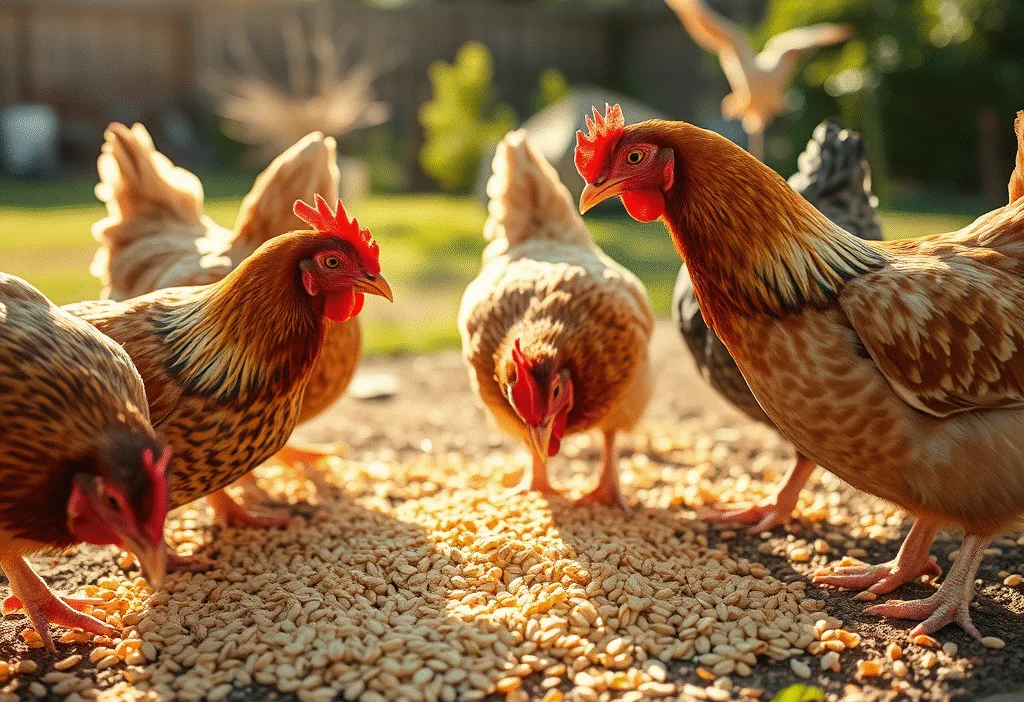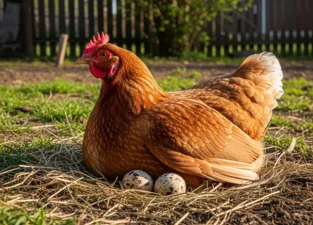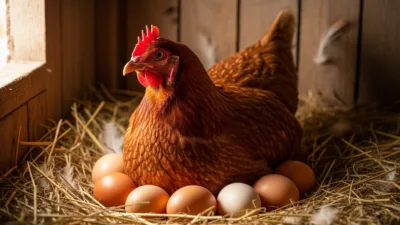Scratch grains are a fun and useful part of backyard chicken keeping, but when it comes to quantity, more isn’t always better. Feeding too much scratch can lead to imbalanced nutrition, poor egg production, and even health problems in your flock.
In this guide, you’ll learn exactly how much scratch to feed chickens, how often to feed it, and how to use it as a healthy supplement not a staple in their diet.
What Is Chicken Scratch?
Scratch is a mix of whole or cracked grains like corn, oats, wheat, barley, and sometimes sunflower seeds or milo. It’s meant to be tossed on the ground to encourage chickens to scratch and forage naturally. Think of it like candy for chickens, enjoyable, stimulating, but not nutritionally complete.
Unlike layer feed, scratch does not contain balanced vitamins, minerals, or protein, which are essential for egg-laying hens and growing pullets. That’s why it should be fed in strict moderation.
Recommended Amount of Scratch for Chickens
The general guideline is to offer no more than 10% of your chickens’ daily diet as scratch.
Here’s a breakdown:
- Laying hens: 1 to 2 tablespoons of scratch per bird per day
- Heavy breeds in winter: Up to 3 tablespoons, depending on activity level
- Bantams or small breeds: Just 1 tablespoon or less
- Chicks under 12 weeks: Avoid scratch entirely unless crushed and mixed carefully
Feeding more than this may cause chickens to eat less of their nutritionally balanced feed, leading to nutrient deficiencies, reduced egg output, and even obesity.
How Often Should You Feed Scratch?
You don’t have to feed scratch daily. In fact, many experienced chicken keepers only offer scratch:
- 2–3 times a week as a treat
- Daily in cold weather for extra energy (but still in small amounts)
- As part of a training routine or to encourage foraging in compost or litter
Scratch is most useful when tossed in the afternoon, after your hens have already eaten their layer feed. That way, it won’t compete with their main source of nutrition.
Why Too Much Scratch Is a Problem
Overfeeding scratch can cause several issues in your flock, including:
- Protein deficiency: Reduced egg production and poor feather condition
- Calcium imbalance: Thin eggshells and fragile bones
- Obesity: Especially in confined or urban flocks with limited exercise
- Selective eating: Chickens may skip their feed and wait for scratch
- Rodent attraction: Excess scratch on the ground invites pests
In small backyard coops, where hens don’t have much space to roam, scratch should be used even more cautiously.
How to Feed Scratch the Right Way
To use scratch grains effectively, follow these best practices:
- Scatter it across clean ground or bedding to encourage foraging
- Avoid bowls or piles, let chickens work for it
- Only feed enough that they’ll clean it up in 15–20 minutes
- Store in an airtight container to avoid mold and rodents
- Adjust amounts based on season, activity level, and age of birds
In winter, a slightly higher amount of scratch can help chickens generate body heat. But even then, it’s not a substitute for quality protein or calcium sources.
Alternative Treats That Are Healthier Than Scratch
If you want to vary your treats while keeping things healthy, consider these options:
- Fresh vegetables (cabbage, kale, squash)
- Small amounts of fruit (berries, melon, banana)
- Cooked eggs or scrambled tofu for protein
- Black oil sunflower seeds (in moderation)
- Mealworms (dried or live)
These options offer more balanced nutrition than standard scratch mixes and can be used as occasional treats or supplements.
Final Thoughts
So how much scratch should you feed your chickens? The answer is simple: a little goes a long way. Stick to 1–2 tablespoons per hen, only a few times a week, and always prioritize layer feed as their main source of nutrition.
Used correctly, scratch grains are a great way to encourage natural behaviors, keep your flock engaged, and even warm them up in winter. Just remember, it’s a treat, not a meal.



